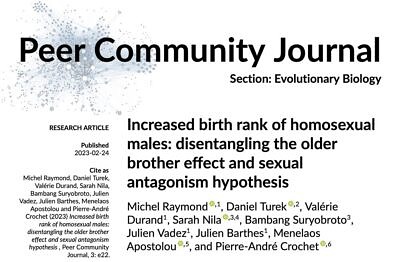Last article on male homosexual preference: how to explain the effect of birth rank?

Male homosexual orientation remains a Darwinian paradox, as there is no consensus on its (ultimate) evolutionary determinants. An intriguing feature of homosexual men is their higher birth rank than heterosexual men. This may be explained by two non-exclusive mechanisms: an antagonistic effect (AE), implying that more fertile women are more likely to have a homosexual son and produce children with a higher average birth rank, or a sibling birth effect (FBOE), where each additional older sibling increases the chances of a male embryo developing a homosexual orientation due to a process of immunoreactivity. However, there is no consensus on whether both types of effects are present in human populations, or whether only one of these mechanisms is at play, its effect mimicking the signature of the other mechanism. Another sororal birth order effect (SBOE) has also been proposed recently. To clarify this situation, we developed theoretical and statistical tools to study SBOE and AE independently or in combination, accounting for all known sampling biases. These tools were applied to new individual data and to a variety of available published data (two individual data sets and all relevant aggregate data). The aggregate data confirmed the existence of the FBOE, which increases linearly with fertility. The FBOE was also supported in two individual data sets. An SBOE is generated when sampling in the presence of an FBOE, suggesting the need to control for the FBOE to avoid artifactual SBOE. EI was not confirmed in any of the data sets, including the extended maternal family analysis. The evolutionary implications of these results are discussed.
